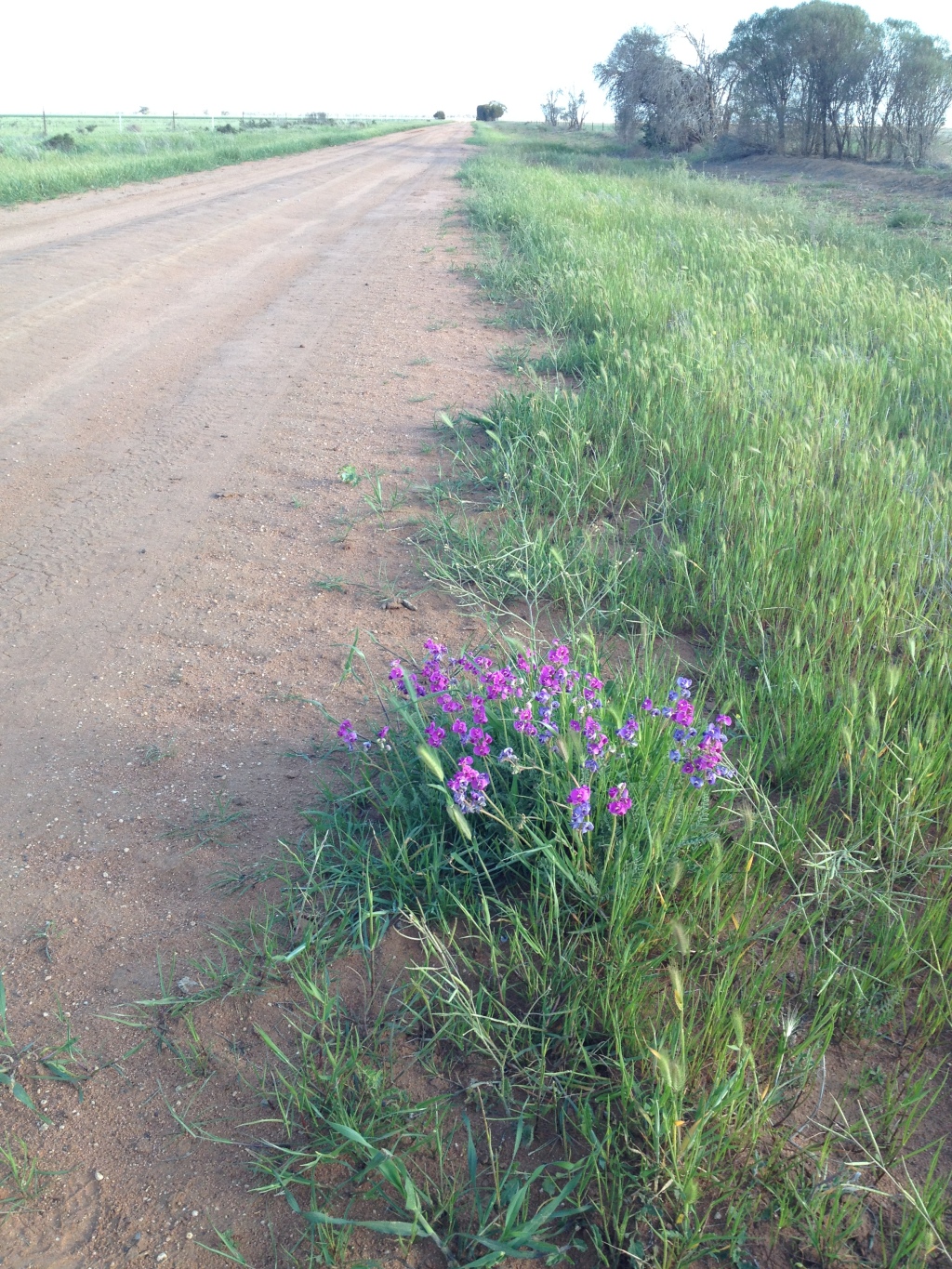Swainsona swainsonioides
(Benth.) A.T.Lee ex J.M.Black Downy Swainson-peaSpreading, ascending perennial herb or sub-shrub to 1 m tall; stems with a sparse to dense cover of spreading or antrorsely curved, basifixed, tuberculate hairs c. 0.5 mm long. Leaves 3–12 cm long; leaflets 11–21, broadly or narrowly obovate or elliptic, sometimes lanceolate, leaflets 5–20 mm long, mostly 4–6 mm wide, apices acute or obtuse, rarely retuse, with a small recurved point, upper surface usually glabrous, lower surface pubescent; stipules to 15 mm long, oblique. Racemes mostly 6–15-flowered; flowers usually 8–15 mm long; calyx virtually glabrous, teeth longer than tube; petals purple; standard 6–16 mm long, 9–22 mm wide, elliptic, shortly clawed; keel 8–12 mm long, apex long, slender, acute, upcurved then recurved, strongly twisted, tip blue; style tip incurved or inflexed, with few or no hairs below. Pod ellipsoid to obloid, 15–35 mm long, 5–8 mm wide, inflated, curved, shortly pubescent, stipe minute; seeds to c. 20, obliquely cordiform, c. 2.5 mm long, brown. Flowers mainly Aug.–Nov.
MuM, Wim, VRiv, Gold, NIS. Also SA, Qld, NSW. In Victoria, mainly confined to the Wimmera and nearby districts (e.g. Donald, Birchip, Nhill areas), east to near Kerang. A 1903 record labelled simply 'Benalla' implies a former wider distribution, but absence of recent records from that area suggests the specimen is mislabelled or it is now likely extinct in this area. Grows on heavier clay soils in woodland and now very rare due to habitat destruction.
Jeanes, J.A. (1996). Fabaceae. In: Walsh, N.G.; Entwisle, T.J., Flora of Victoria Vol. 3, Dicotyledons Winteraceae to Myrtaceae, pp. 663–829. Inkata Press, Melbourne.
 Spinning
Spinning

